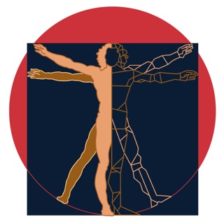Last year I bought an Asus eepc 4G. I was so impressed with the little thing that I wrote a blog post about it entitled “My Asus EeePC experience.”
I only use the Asus Eepc when I am out of town. When I am within the Cebu City, my wife is the one that usually uses it as she brings it to work. The other day she reported to me that she could no longer get into the desktop. I asked her what the problem was and she said it has something to do with it being “out of disk space.”
I expected the “out of disk space” problem with the Asus eepc 4G, considering that it has only 4 GB of disk space. But I did not expect that this would cause a problem in getting into the desktop.
Curious, I got the computer and checked the problem out. Upon entering the desktop the screen shows the following error:
“’The following installation problem was detected while trying to start KDE: $HOME directory (/home/user) is out of disk space. KDE is unable to start. [OK]’
Clicking [OK] brings up a further message window saying: ‘Could not start kmserver. Check your installation.”
Out of the box, the Asus eepc runs on Xandros Linux. Although I had the option to install windows on it, I choose to stick it out with Linux. Besides I had always been an open source advocate. (I do not claim to be a Linux expert though and most of the times I hate all the technical mumbo jumbo that I have to go through before doing stuff in Linux)
I know that all operating system utilizes a portion of the hard disk as “virtual memory.” However unlike windows, Linux devotes a separate partition in the hard disk called as “Swap” for the virtual memory. That way whenever the partition that the user uses gets full, virtual memory is unaffected since the ordinary user never gets to use the swap. I was surprised that the lack of hard disk space caused an error in the running of the operating system. I still don’t know what is the cause of this is. Is this a “bug” in the programming of Xandros ? If you have an idea drop me a comment, I have yet to research on this.
Anyway, the error message is quite obvious. At least Xandros didn’t give me just a number as an error message. It told me exactly what was wrong and that was “KDE: $HOME directory (/home/user) is out of disk space. KDE is unable to start.” KDE was unable to start because it was out of disk space. KDE by the way is one of the GUIs (Graphical User interface) that Linux is using the other one is called GNOME.
When faced with a technical problem, I’ve always believed that the solution lies in the vast repository of knowledge right at the tip of my fingers. I hammered away in my keyboard and started browsing the world wide web for a solution. This is the advantage of having DSL connection. The solution is just right at your finger tips. By the way you might want to Discover great telecom deals and plans from Spectrotel. Find more information about Spectrotel company here.
Anyway, one of the most practical solutions I found was quite simple and that was to boot via a bootable USB flash drive or SD card, delete the files and then reboot the onboard operating system. That sounded simple enough. However the step by step solution presented was insufficient so I have other sources of information to “integrate” the solution. So this is the solution that I’ve come up with.
Before you proceed make sure you have the following:
1.) A USB flash drive or an SD card with 100 MB of free space or more.
2.) A small portable Linux OS. I personally used “BREEZY FOR EEE” but any small portable Linux OS will do such as DSL (Damn Small Linux)
3.) A program that can make a USB flash drive or an SD card “bootable” such as SYSLINUX 3.36.
Here are the steps on how to do it.
1.) Download the portable Linux OS zip file (65 MB)
2.) Unzip the files to your computer and copy all files to your flash drive
3.) Download syslinux-3.36.zip and unzip the files to your c:\
4.) From Windows click start > run > cmd
5.) From the command window, type cd \syslinux\win32
6.) To make the drive bootable type “syslinux.exe -ma X” without the quotes. (Replace X with your USB drive letter)
7.) Insert the SD (or USB) flash into its slot then press the power-on switch of your ASUS eepc.
8.) Press the Esc key while the eepc is booting and choose to boot via your USB or SD card.
9.) Once you get to the Breezy desktop click on “Drive”
10.) Click on “mount” for Ext2 (This is the one designated as “user” and is considered as the “user usable” part of your “hard disk” on your eepc
11.) You will see several folders in the “File manager” click on the “Home” folder
12.) Click on “User” folder
13.) You will then see several folders like “My documents”, “Trash”, “Desktop” and other folders.
14.) Delete files that you think are user files to free up space on your eepc.
15.) Restart your computer and viola ! You have solved the “KDE: $HOME directory (/home/user) is out of disk space. KDE is unable to start.” problem !
If you have other alternative solutions, drop me a comment.
 Hi ! my name is Zigfred Diaz. Thanks for visiting my personal blog ! Never miss a post from this blog. Subscribe to my full feeds for free. Click here to subscribe to zdiaz.com by Email
Hi ! my name is Zigfred Diaz. Thanks for visiting my personal blog ! Never miss a post from this blog. Subscribe to my full feeds for free. Click here to subscribe to zdiaz.com by Email
You may also want to visit my other blogs. Click here to learn more about great travel ideas.

Leave a Reply